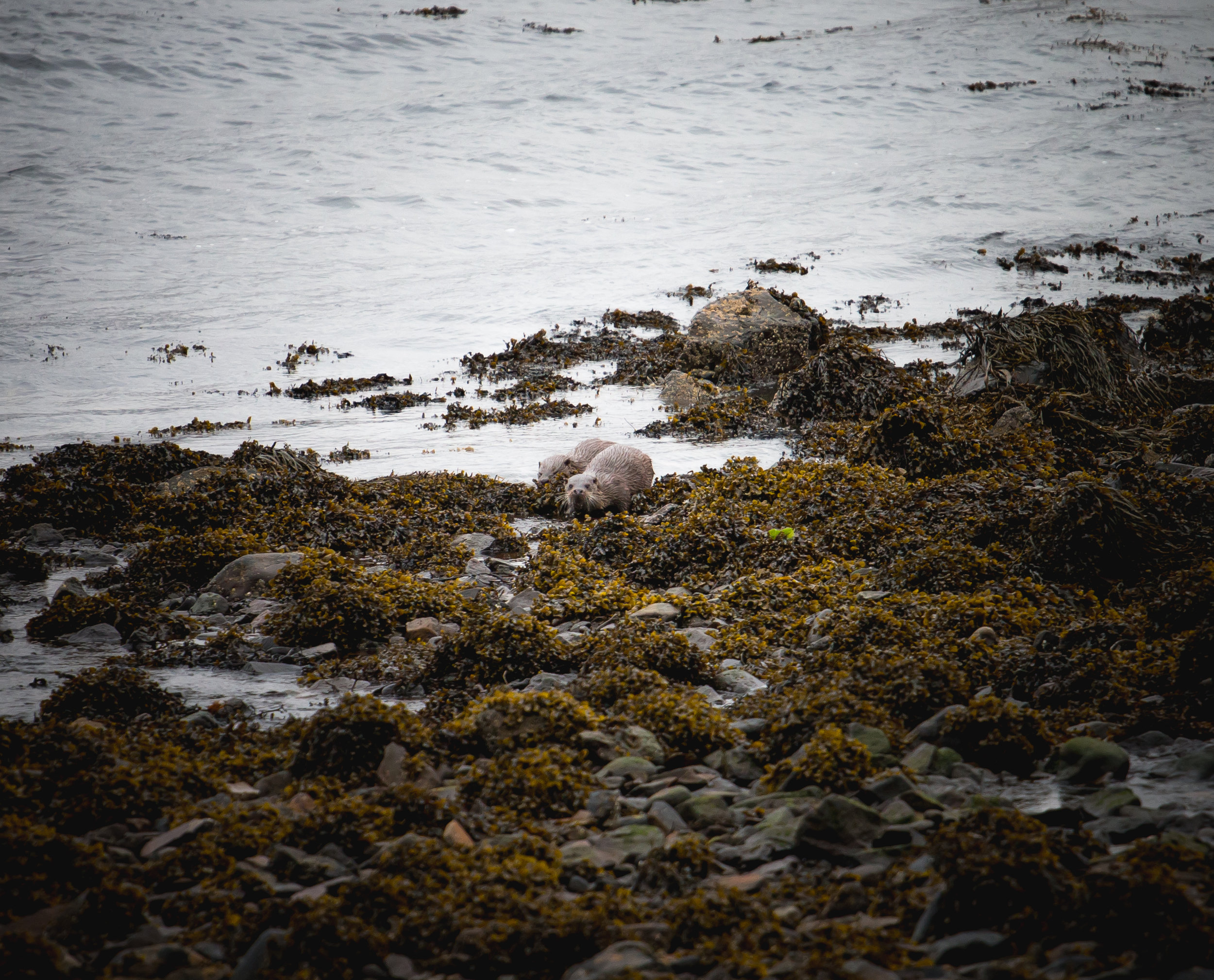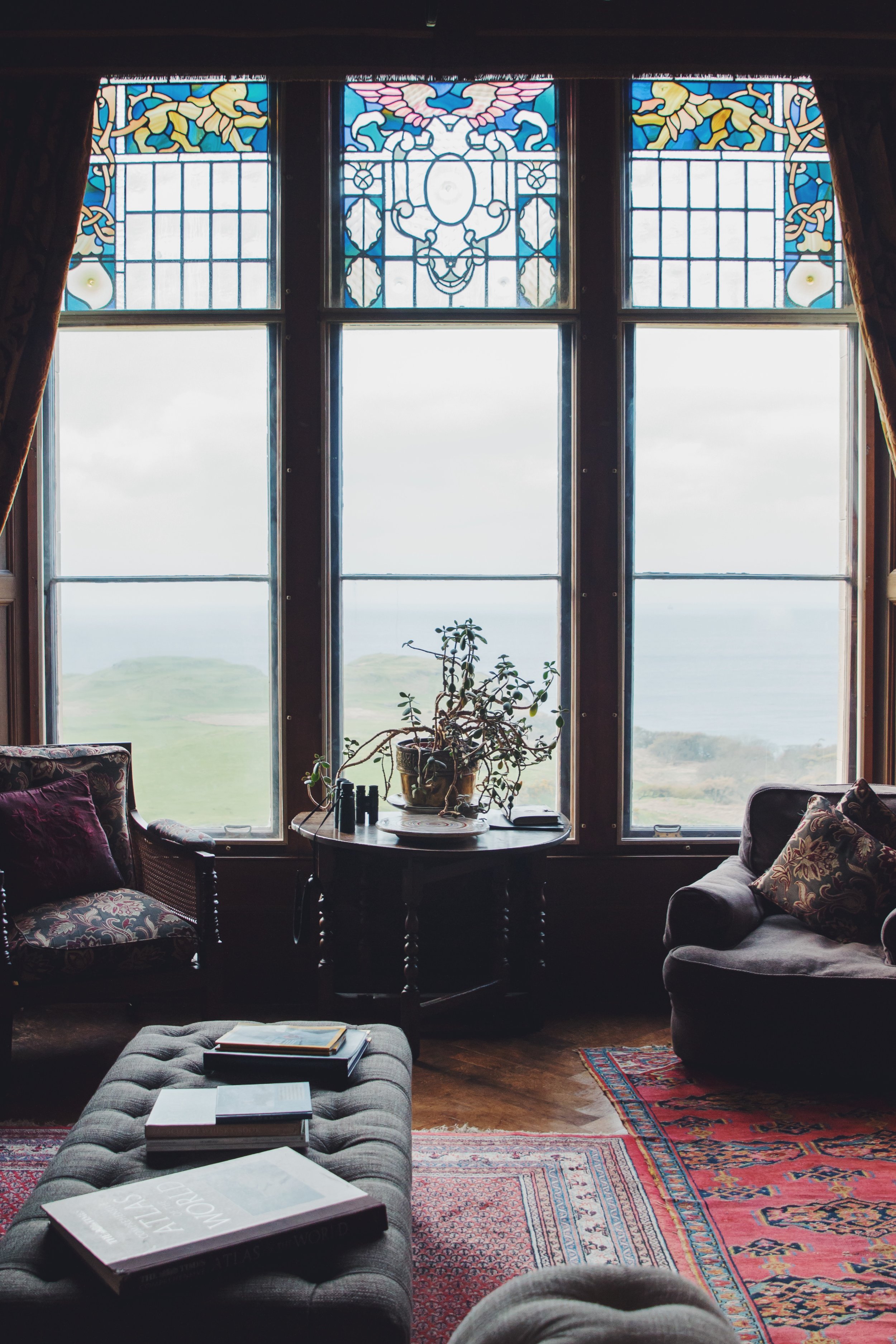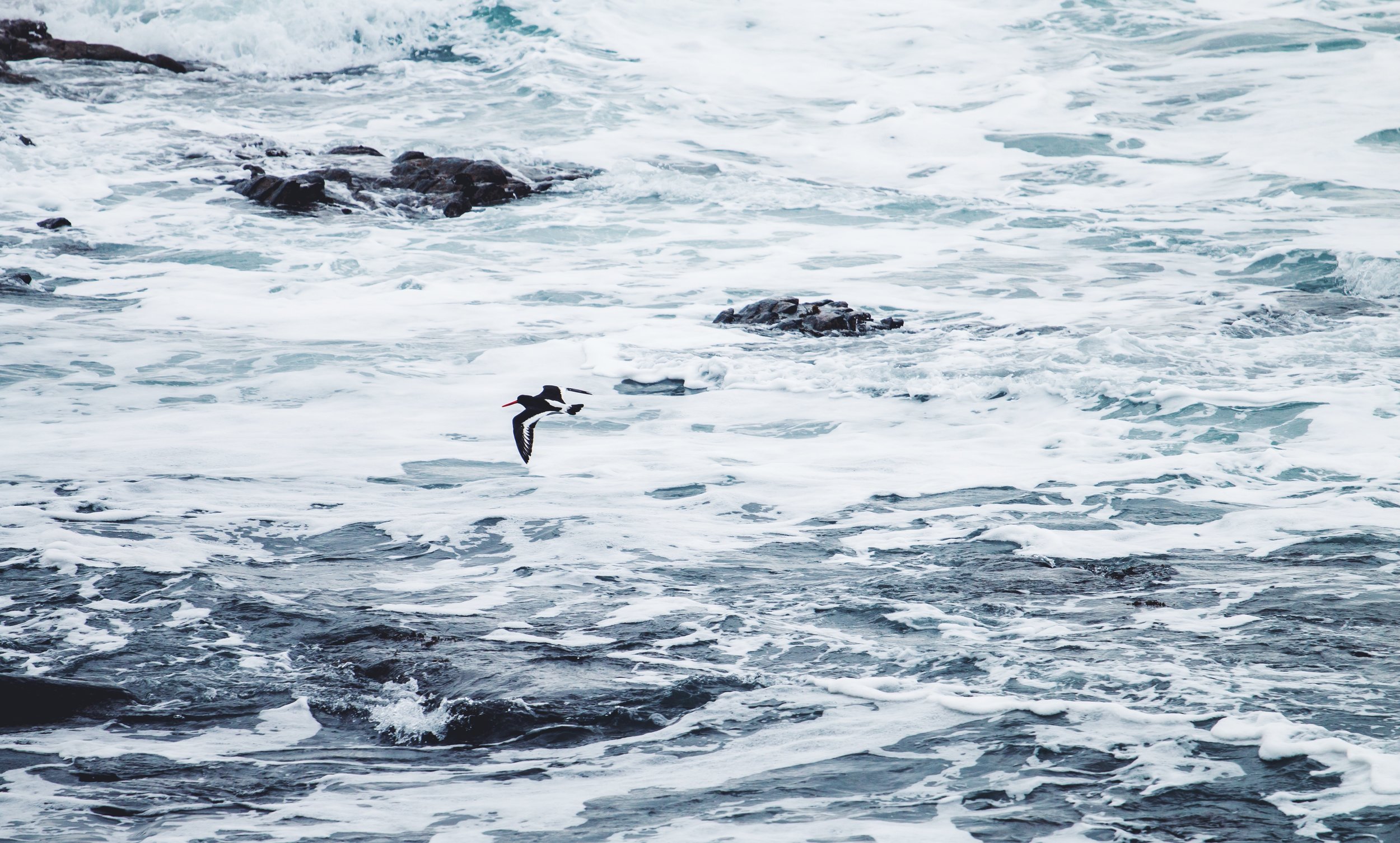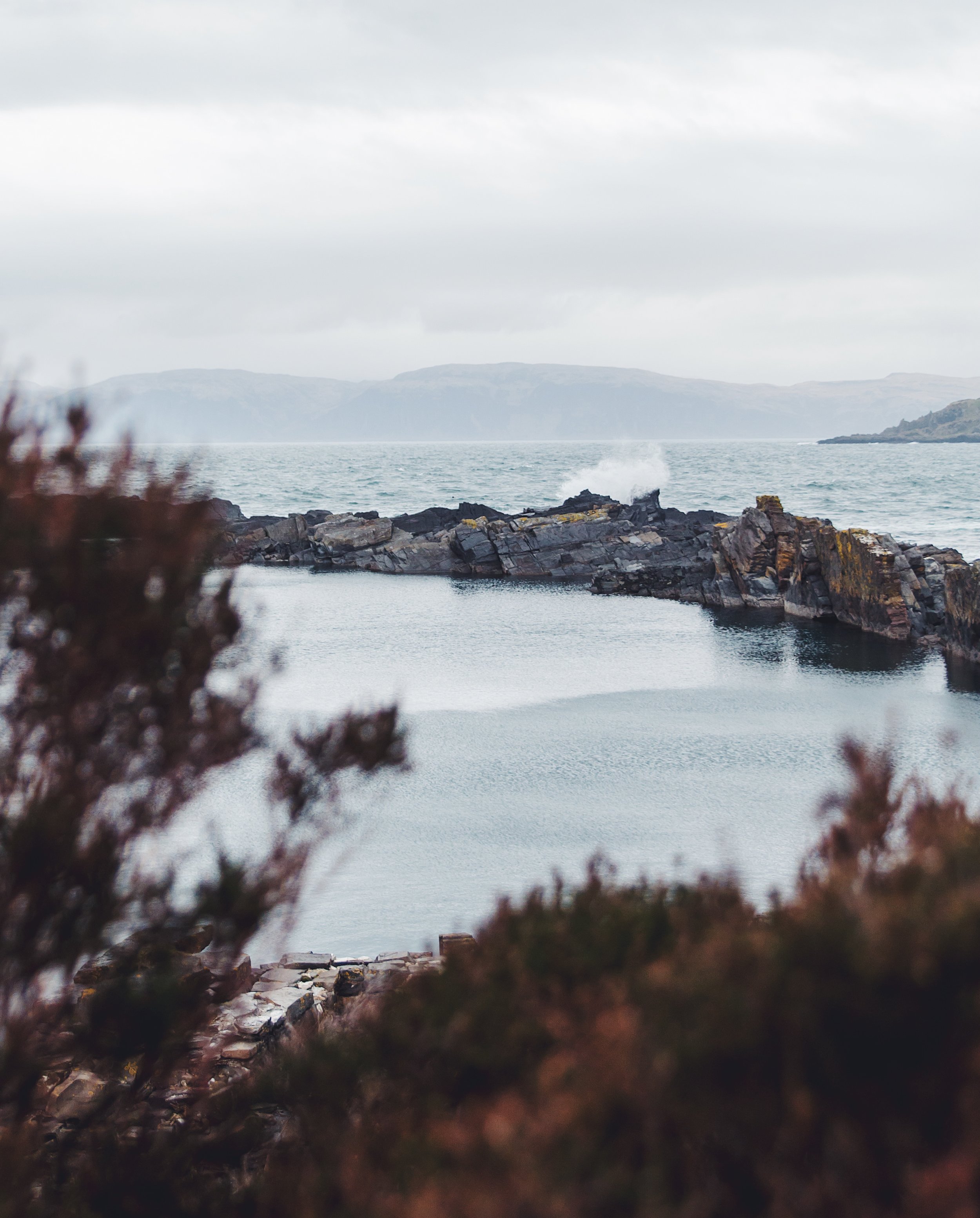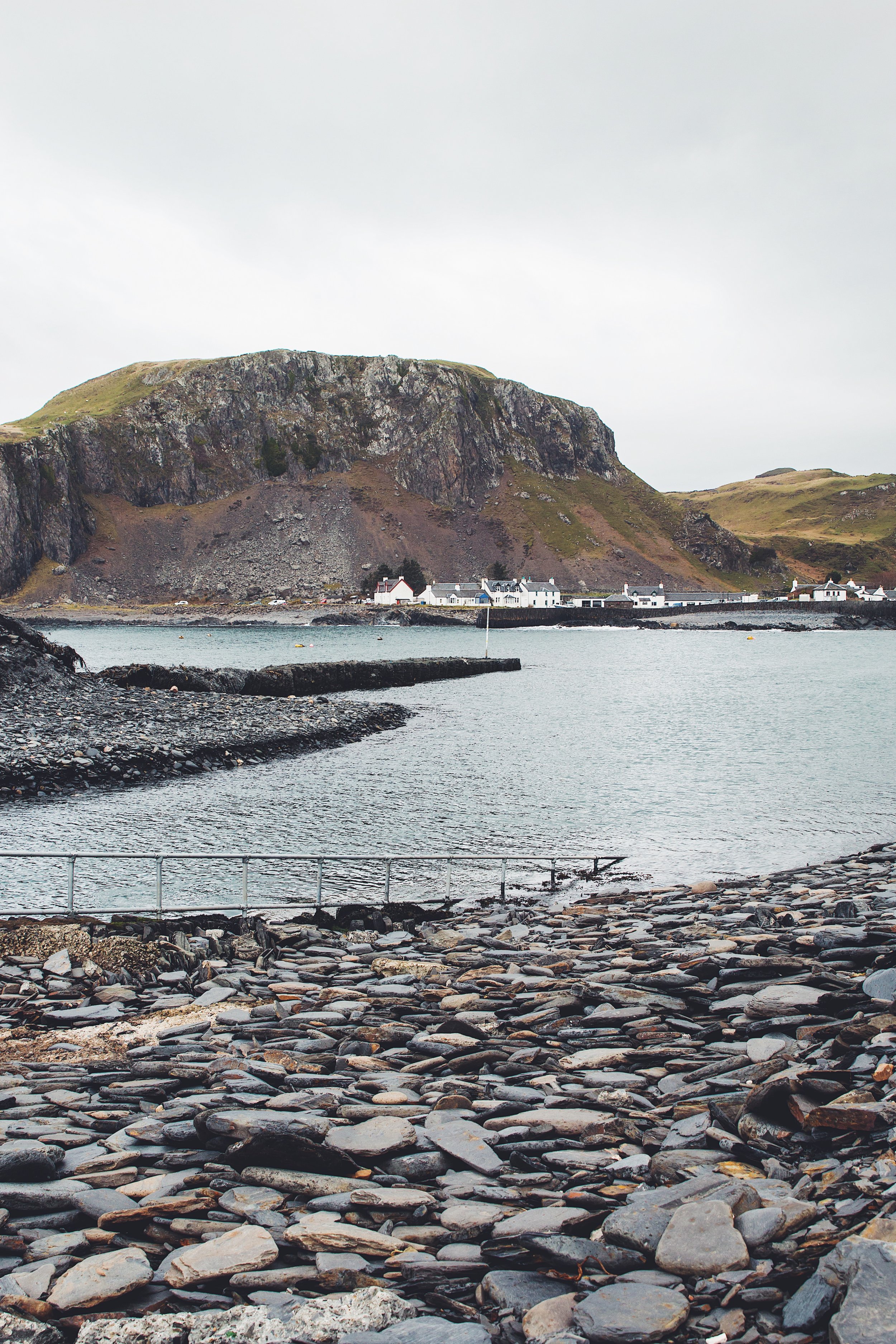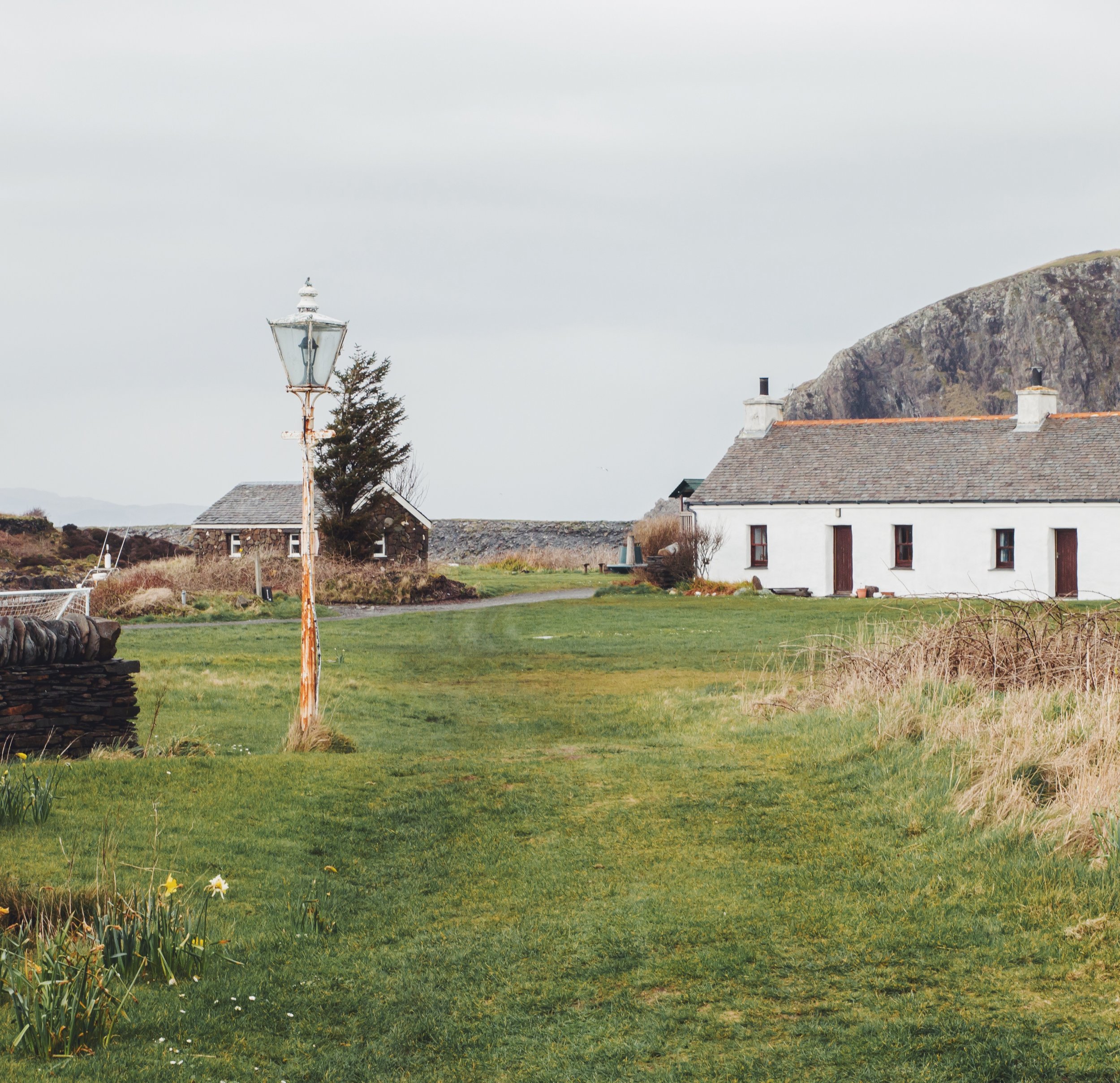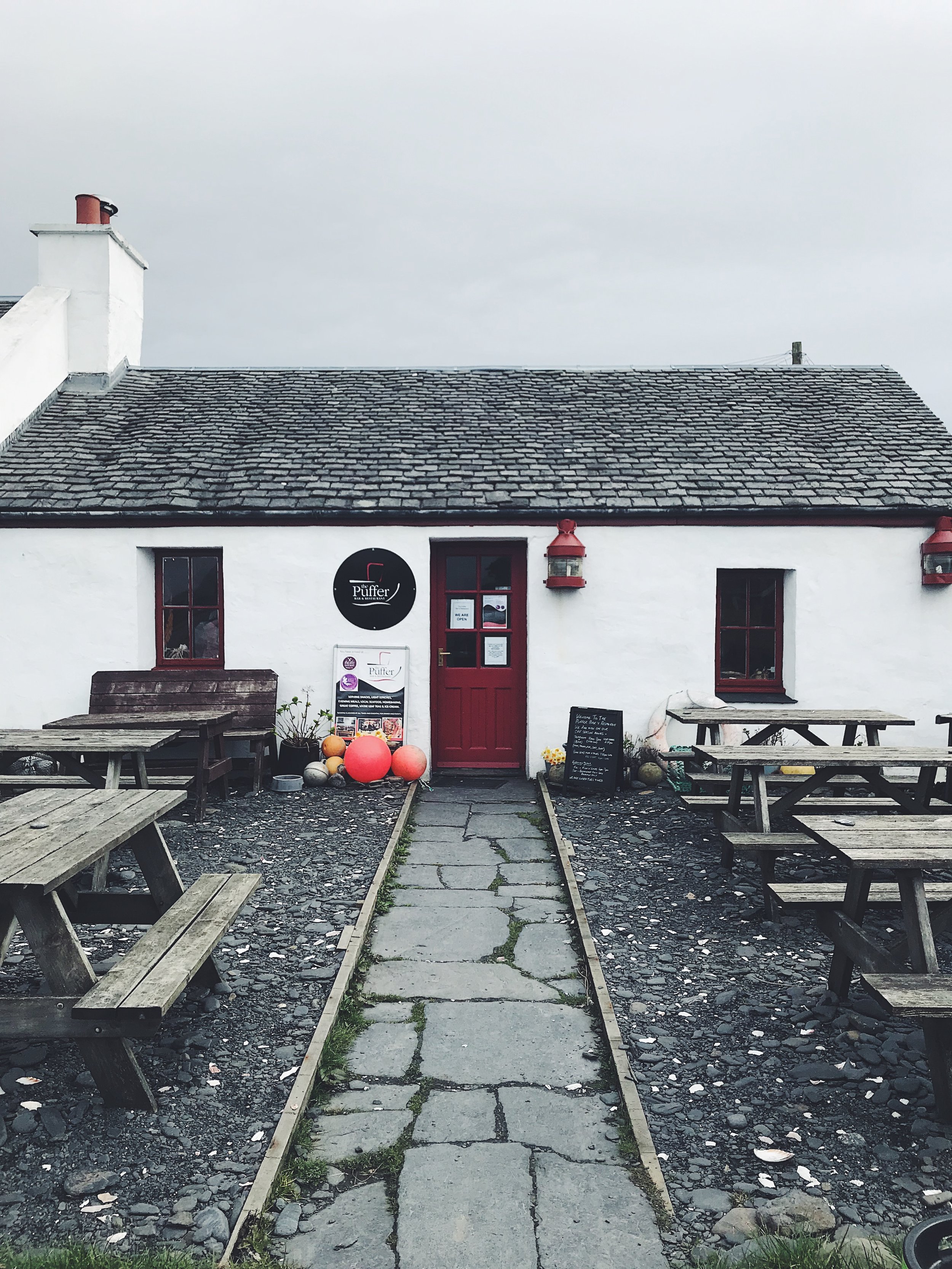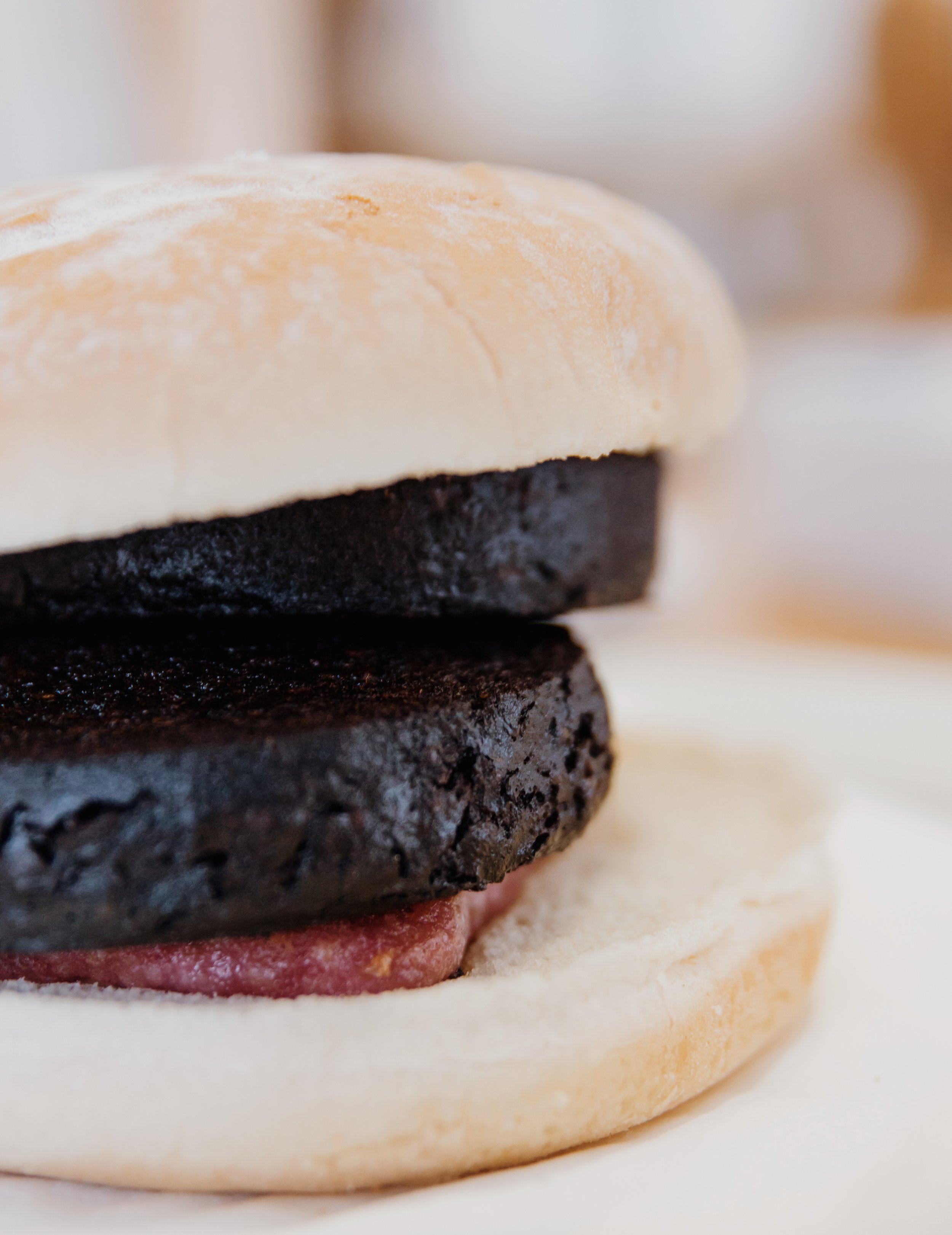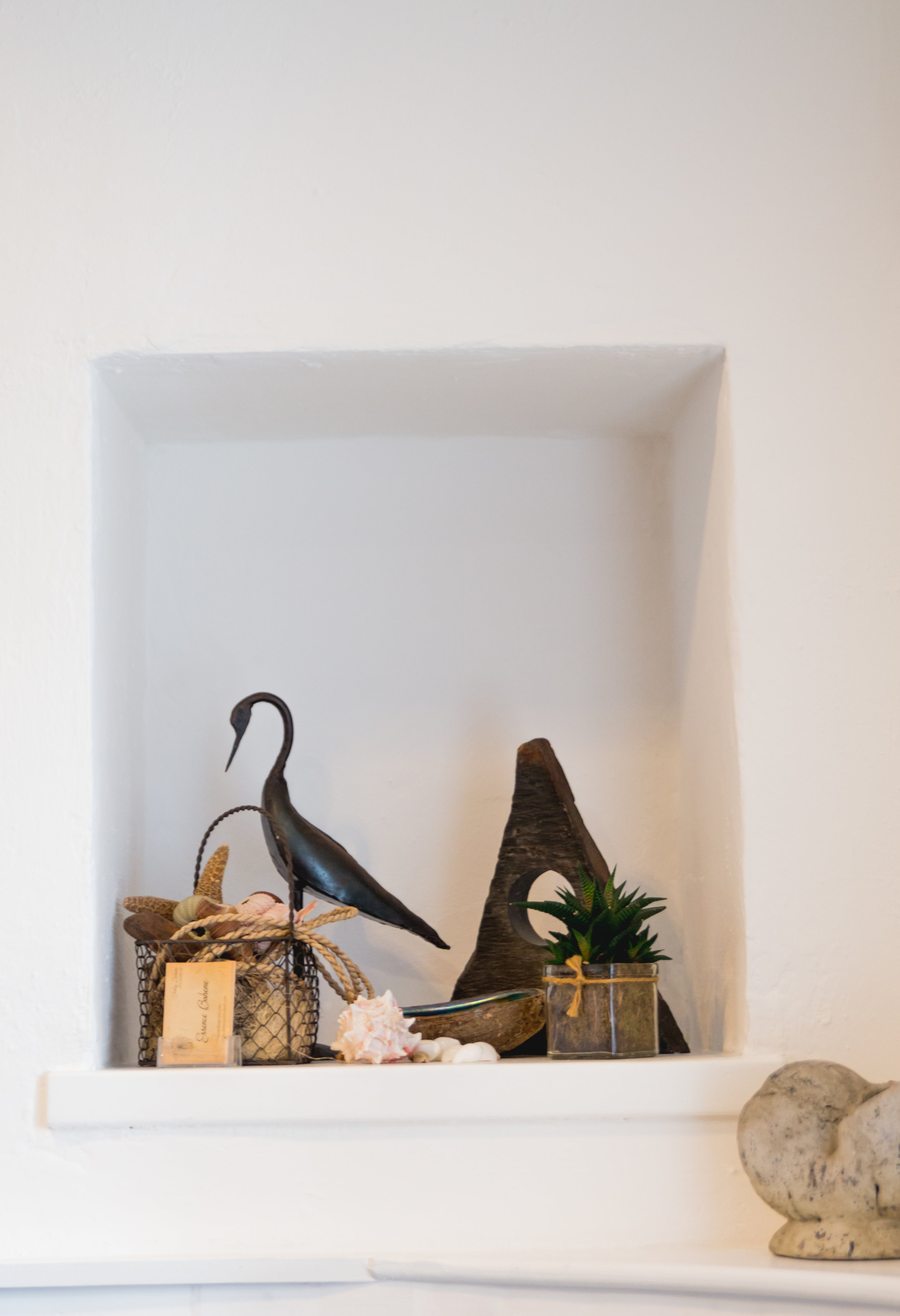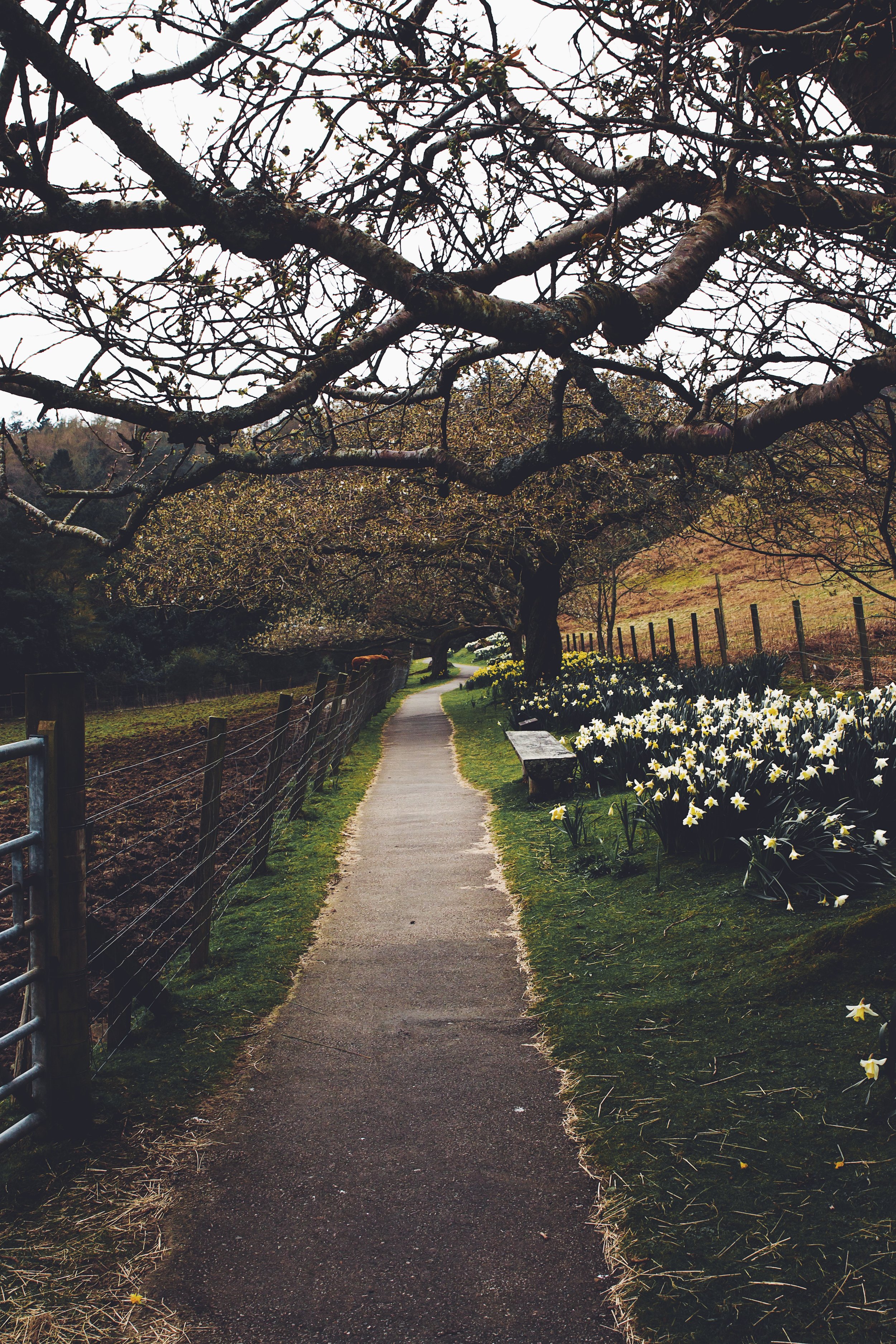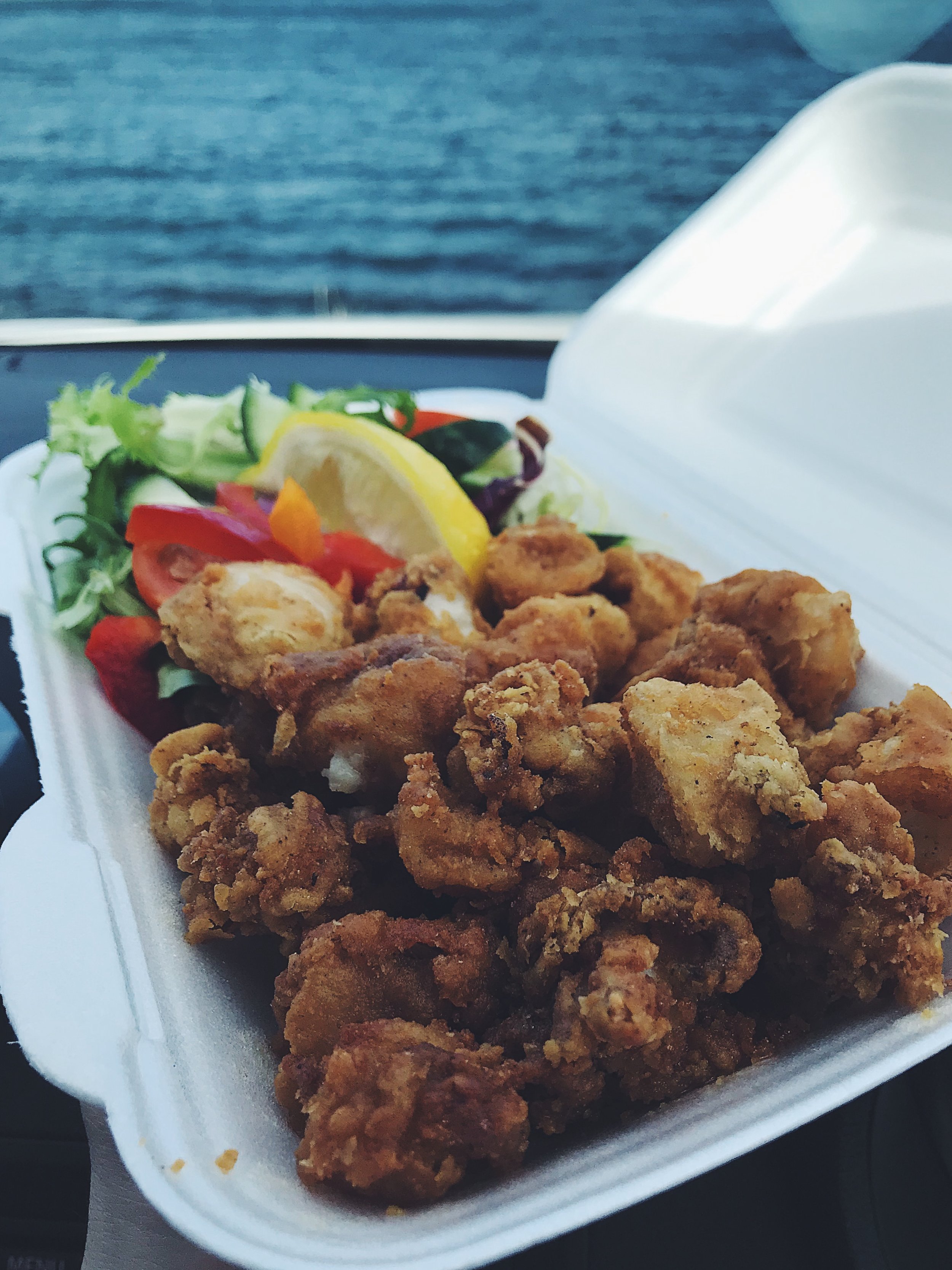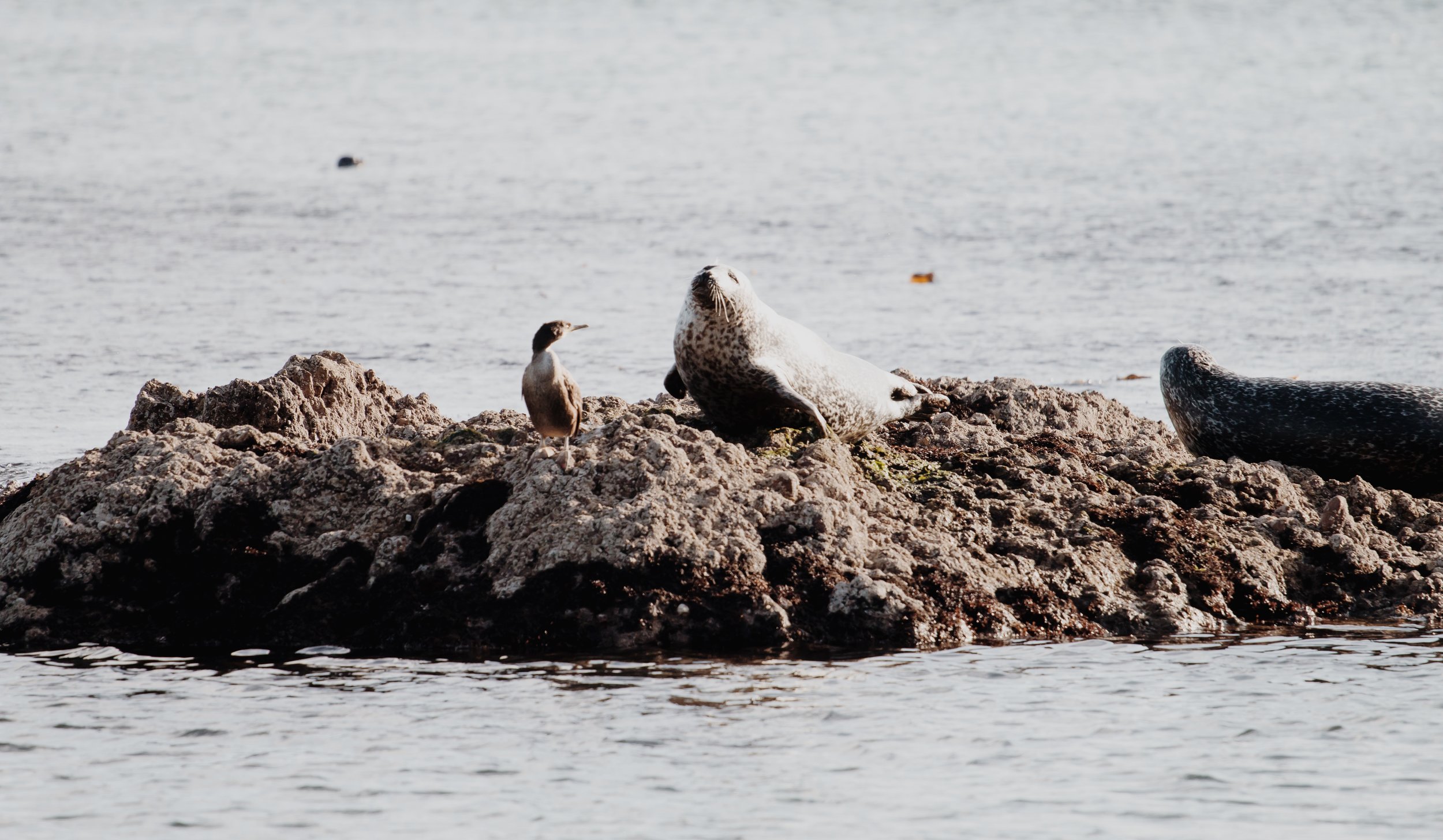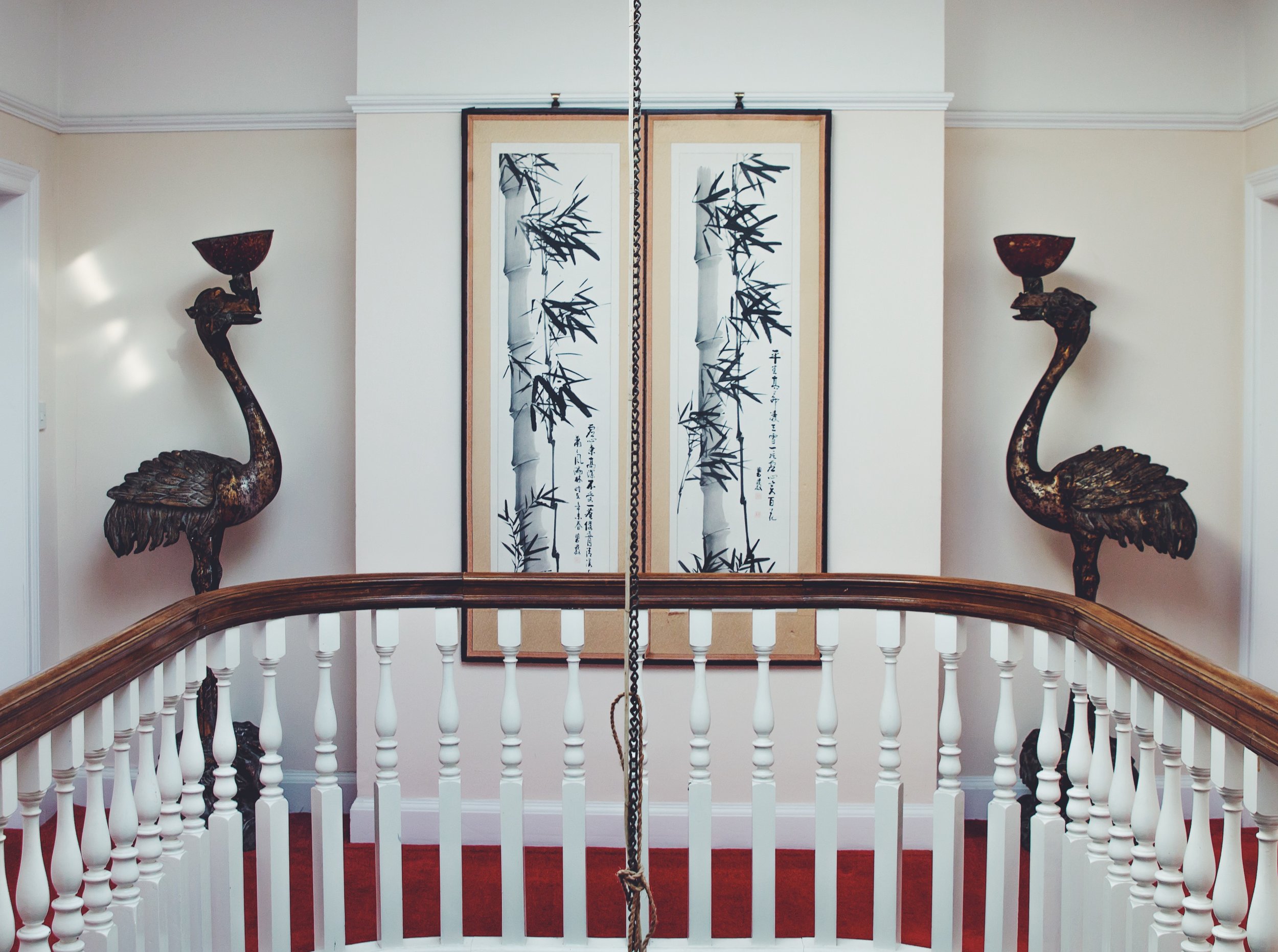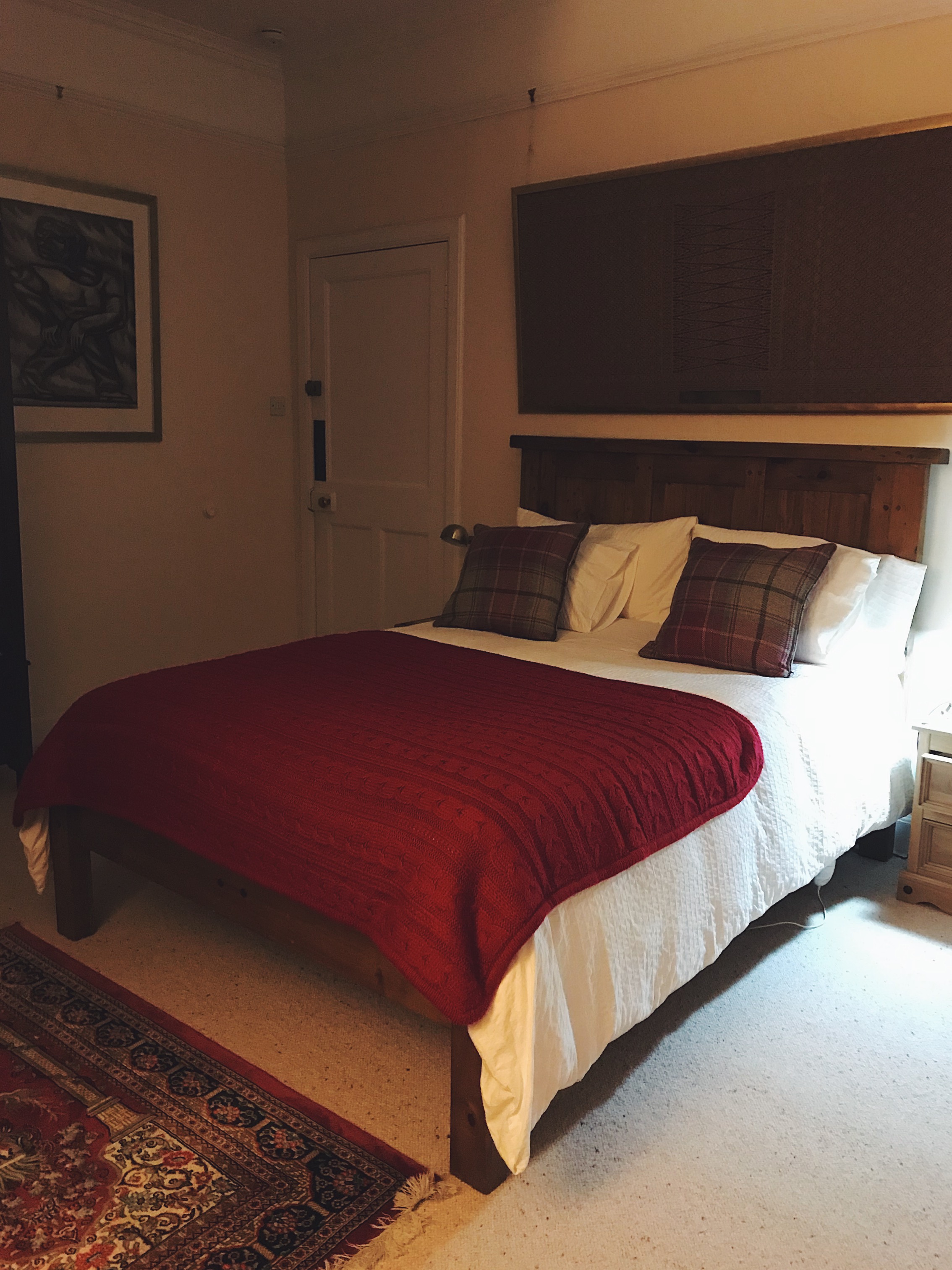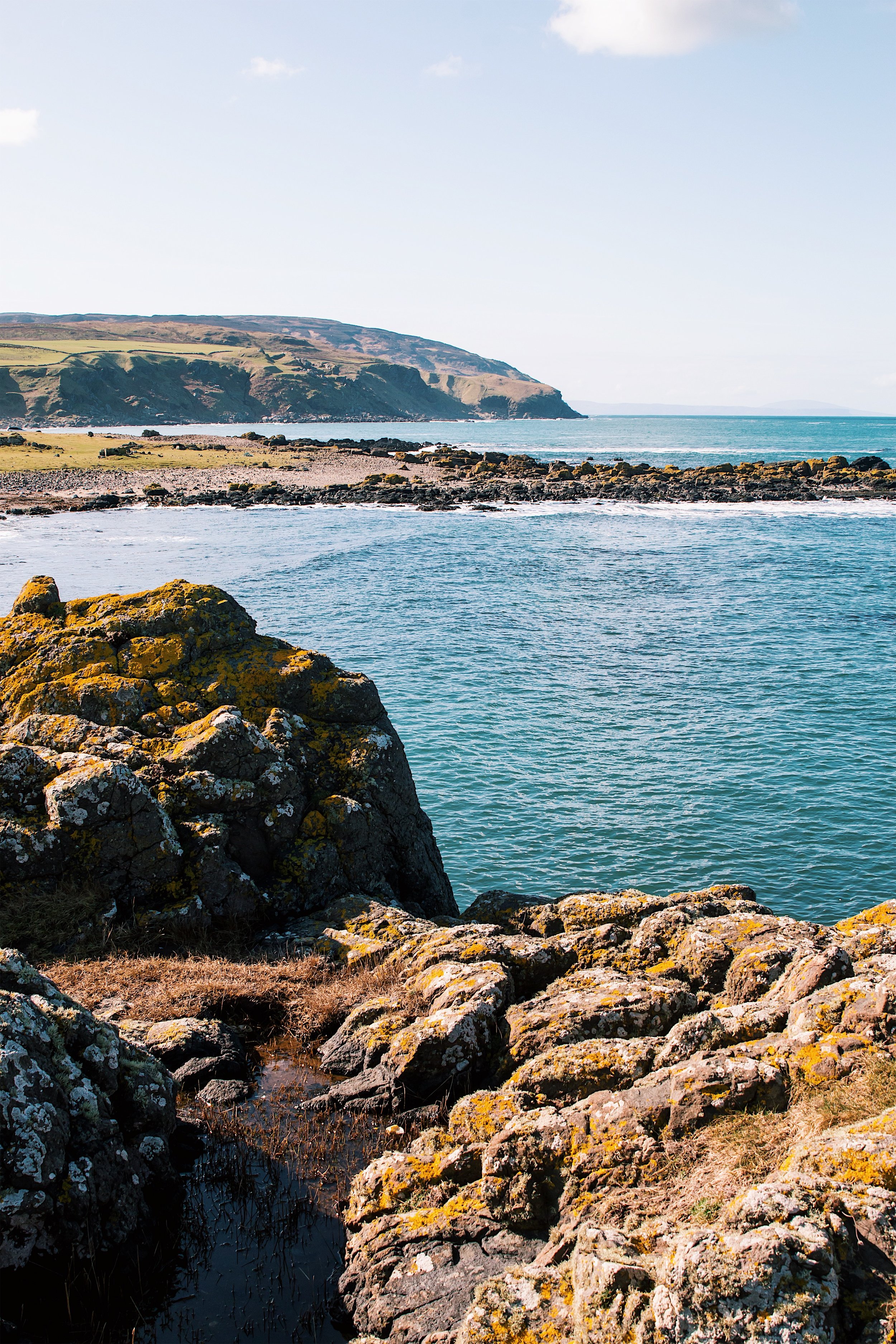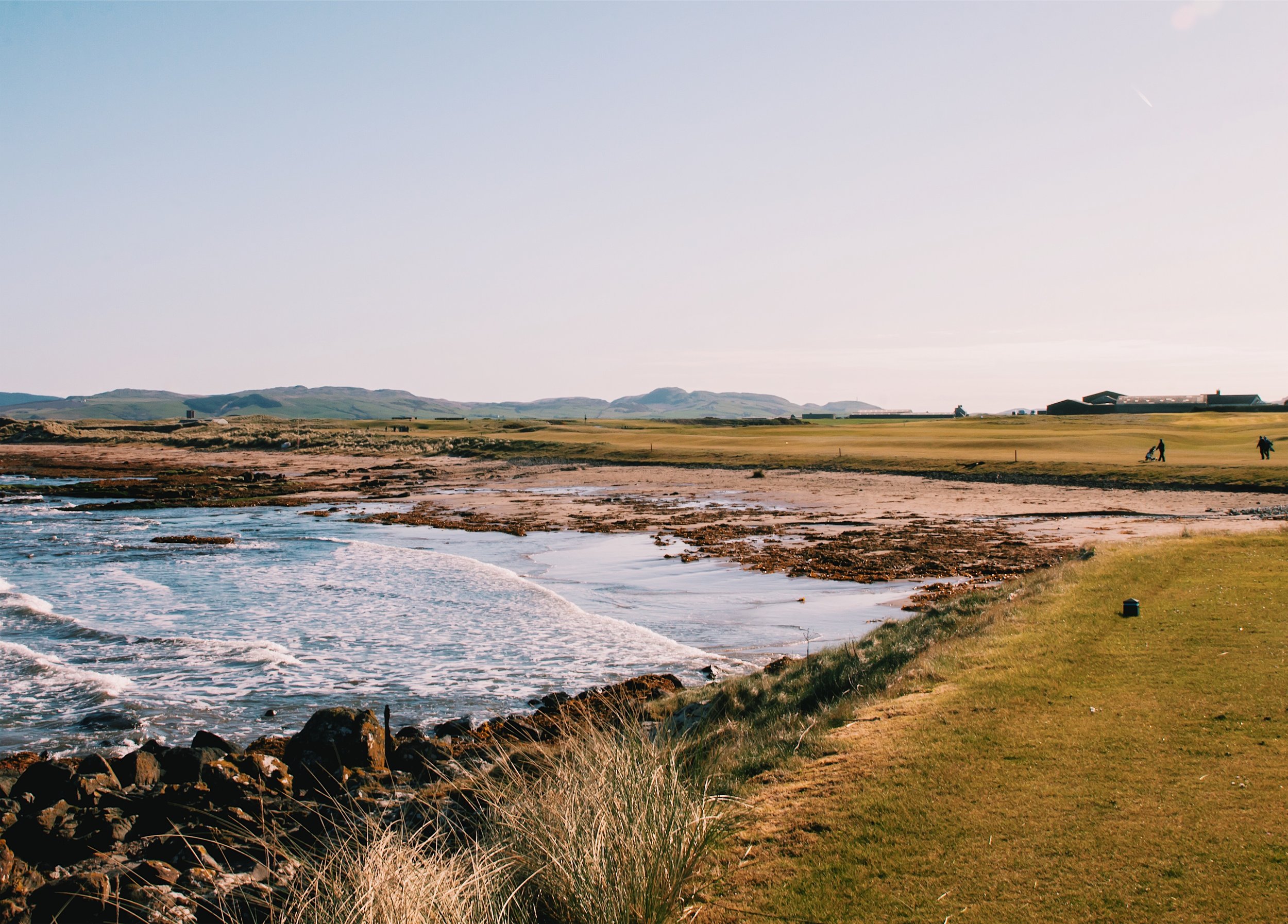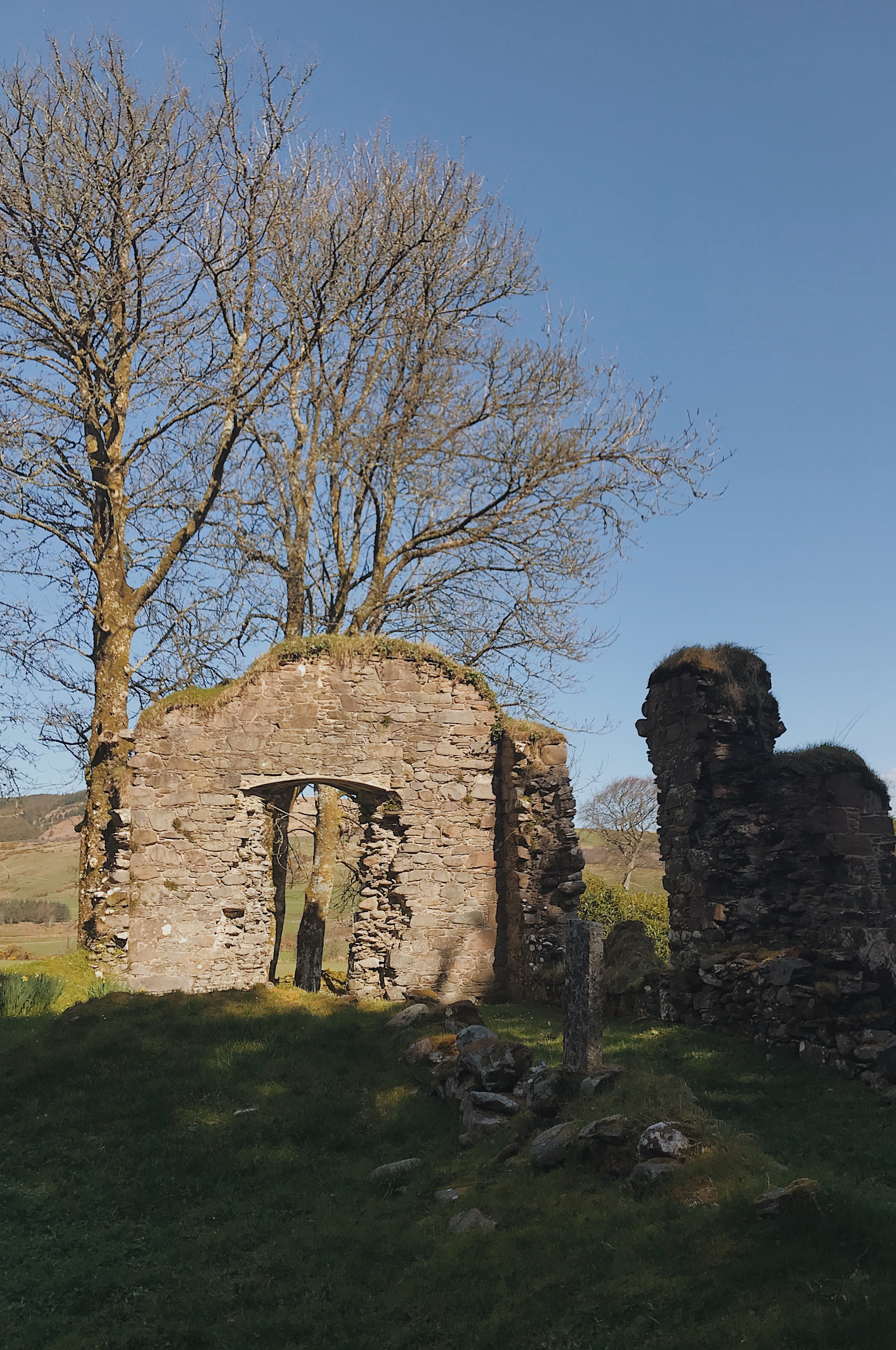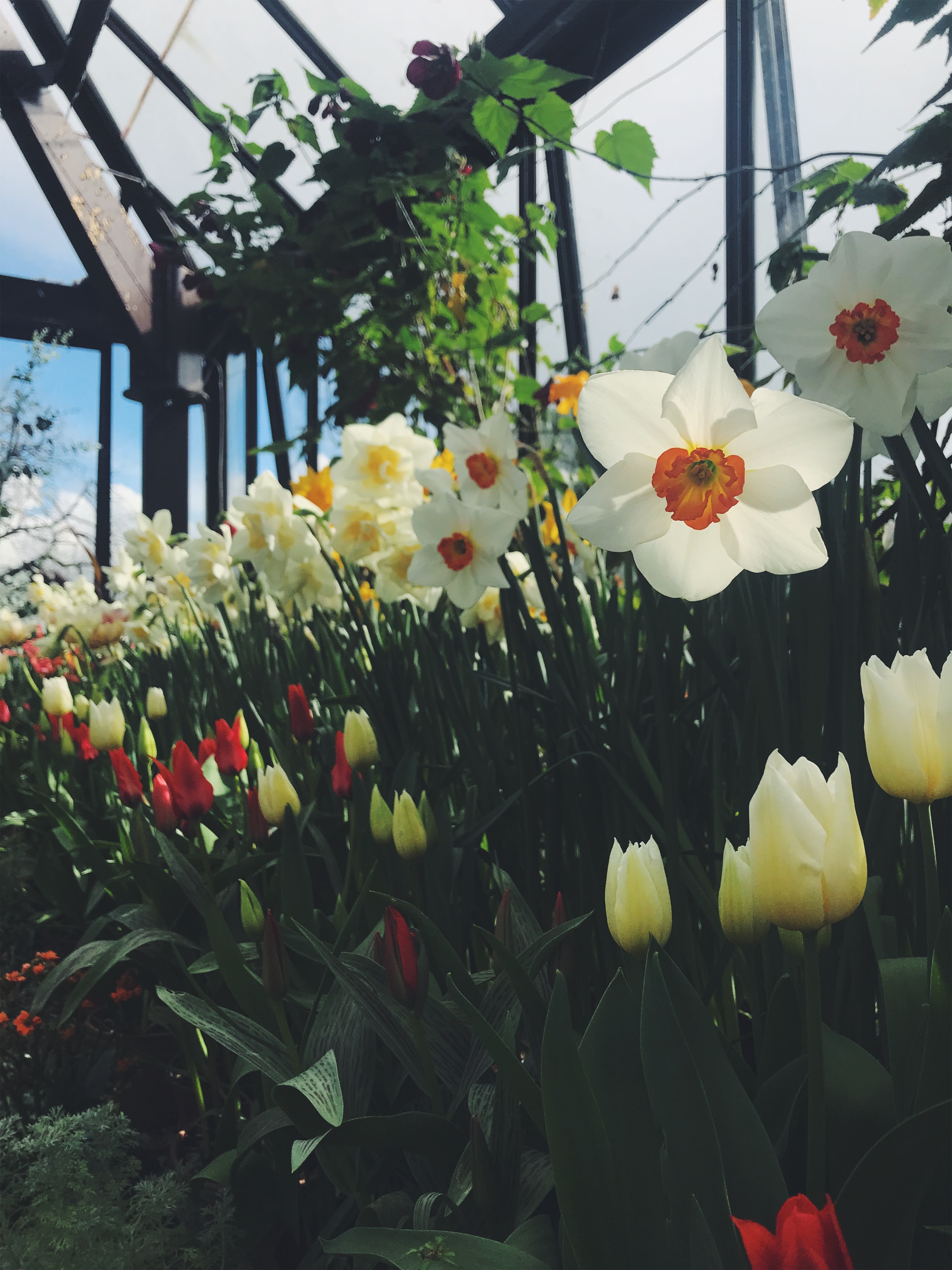Hello and welcome to my first blog from my adventures around Argyll and Glasgow, it was a paid campaign ‘The Heart and Soul of Scotland’ with Wild About Argyll and People Make Glasgow. This blog is going to concentrate on my itinerary over the 8 days and the places I visited. I will touch on the things I got up to but there will be more blogs to come focusing on wildlife, history, beaches and food. So grab a cuppa tea or even better, a wee dram and let me tell you about my adventures around the best county in Scotland..
I set off from Lochgilphead and travelled up the B816 to Oban to catch the ferry to Mull, this is the quickest route for me but if you were coming from Glasgow or anywhere from the central belt and further east the best route for you to take would be the A82 which takes you along the bonnie banks of Loch Lomond and then joins the A85 at Crianlarich. The A85 then continues west to Oban. The scenery along this stretch of road is spectacular and there are some notable places to stop along the way including the exquisite St Conans Kirk, Cruachan Power Station also known as the Hollow Mountain, Inverawe Smokehouse who I can assure you sells amazing produce. Oh and last but not least Kilchurn Castle, probably Argyll’s most famous landmark. This is a place most of you have probably been pronouncing wrong. Most people pronounce it the way it’s written, ‘Kil-Churn’ but the correct pronunciation is ‘Kil-Hoorn.’
Kilchurn Castle
Anyway, that was a wee bit of extra information, lets get back to me trip. I caught the 10am ferry from the Calmac ferry terminal, I had to be there for 9.30am as you are required to turn up at least 30 minutes before the ferry sails. They are very strict about this and if you turn up late, even though you are booked on, you may not be allowed to board. If you are taking your car over I highly recommend you book well in advance! The ferries get very busy especially during the summer months and many people turn up to find the ferry is fully booked.
It only takes 50 minutes to cross from Oban to Craignure and the sailing is very scenic. Mull is the 3rd largest of the Hebridean islands at 875km squared and one of the most easily accessible. There are 3 ferries to the island, the aforementioned from Oban along with one from Lochaline and one from Kilchoan. The main town of Tobermory was made famous by the children tv programme Balamory which was filmed in the town. The landscape of Mull is diverse, wild and an absolute haven for wildlife.
When I arrived on the island I headed straight for Pennyghael in the south of the island ( I’m going to insert a link to a map of the island here) to meet up with wildlife guide Bryan who runs Wild about Mull. Bryan has lived on Mull for 13 years and has over 30 years experience in wildlife watching. I was so impressed with his knowledge, he knew the name of every bird we passed along with vast amounts of information about each species. On top of that he’s a really nice and friendly man who’s dead easy to chat too. I told Bryan I wanted see otters and after a couple of hours of fruitless searching I did eventually get an incredible encounter with some otters. However, to hear more about my otter encounter along with tips I learned from Bryan on spotting wildlife you’ll need to wait until my wildlife blog but in the meantime I will leave you with a photo.
Mother and cub
After my otter encounter I left Pennygheal, driving further down the Ross of Mull where I met up with my boyfriend who lives on the island. He took me to the most idyllic beach called Traigh Bhan na Sgurra (White sands of Scoor.) Just before the town of Bunessan you’ll see a sign post for Scoor, if you follow this road you’ll come to the beach. It is a wee bit off the beaten track so instead of me trying to explain it I will attach an ordance survey map of the area here. Getting down to the beach is a bit of a scramble and I would advise not going alone unless you are confident in the outdoors. It is totally worth the effort though as the bay is absolutely beautiful and the likelihood is that you’ll get it all to yourself. We stayed here for about an hour and because of light winds and high land surrounding, the beach was quite sheltered. Maybe even warm. We went for a wee paddle in the sea but it was absolutely baltic, I have no idea how people swim in water that cold!
Just to the west of this beach there’s another wee cove and in this cove there is a cave, in this cave there are several prehistoric carvings which I found really exciting. The carvings are mainly circles but there is also a trident. Again getting here is a bit of a scramble and the cave is a bit damp and smelly but I’d recommend a visit if you are in the area. I find it fascinating to see evidence of human life from prehistoric times.
By the time we left it was sunset and dinner time, after all the walking about I was starving so we headed for Keel Row in Fionnphort and had an absolute feast. I was so tired and hungry by this time I forgot to take any pictures but the food was delicious and the portions were huge, fantastic value for money. We were joined for dinner by Margaret, Matt and Rachel who own Achaban House where I was staying. After dinner we headed back to the house which is only 2 minutes drive from Fionnphort and I headed straight to sleep as by this time I was totally exhausted.
Day 2
After a well needed sleep I woke up to a fantastic breakfast laid out by Matt and Rachel, the homemade seeded bread was honestly the best bread I have ever tasted. At breakfast I discovered wild swimmer, Calum MacLean had also spent the night at Achaban. We had met a few years earlier so it was nice to say a quick hello. Unfortunately due to my schedule I didn’t get to spend much time in the house but what I saw was comfortable, beautifully furnished and freshly decorated. The hosts could not have been friendlier or more welcoming.
Achaban House.
My first stop of the day was at Ardalanish Weavers, Matt and Rachel had recommended I visit here and it was only a short detour of my route. Ardalanish weavers consists of a farm, weavers shed and shop. The staff are welcoming and more than happy to show visitors around the weavers shed and demonstrate the weaving process. The process is really fascinating and requires a highly skilled individual to carry it out. The tweed made here is then sold in the shop and also online. You can read all about Ardalanish on their website which I’ve provided a link to above.
After leaving Ardalanish I headed back towards Pennyghael then turned onto the B8035, this road is known as the scenic route but it is possibly the most challenging to drive if you are not used to single track island roads. There are steep hills, sharp bends, the road passes below cliffs that are prone to small rock falls and livestock are often found roaming on the road but please don’t let this put you off as the drive it totally worth it and as long as you take it easy and use passing places you’ll be absolutely fine. Along this stretch there are plenty of places to stop for walks, picnics or even a wee wild swim if you are feeling brave. It’s worth keeping your eyes peeled for otters and eagles on this stretch of road.
The scenery is very dramatic on this part of the island and looks incredible is all weathers. Below are a couple of photos which I’ve taken over the past year. The wee white house is actually an industrial cottage, I’m not exactly sure of it’s use but it is part of a hydro scheme.
I carried along the B8035 until I reached Grulin here I turned onto the B8073 which carries along the west coast of the island. This road takes you up the other side of Loch na Keal, I personally think this side of the Loch is the most scenic as you are looking across to Ben More (Mulls only Munro) and the other mountains.
This is a great spot for White tailed eagles, there’s a nest around this area and they regularly swoop down on the loch to catch fish, there are also fish farms nearby which they tend to frequent. I captured this eagle last summer as it was returning to the nest.
White tailed eagle
If you carry on along this road you’ll eventually come to a turn off for the Ulva ferry which takes you to the idyllic island of Ulva. This tiny ferry runs regularly during the summer months and only takes minutes to cross the small channel from Mull. I didn’t have time to visit on this trip but I did spend a day on the island last summer. The island is a paradise for walkers, there are numerous trails around the island for all ages and abilities. As well as natural beauty, Ulva also has a rich history for such a tiny island. One of the walks on Ulva takes you to the ruinous village of Ormaig, ormaig was violently cleared of it’s inhabitants during the Highland Clearances. Ulva was also known for it’s kelp industry and being the birth place of Lachlan Macquarie, The Father of Australia. Also worth mentioning is the Boathouse restaurant which you’ll find at the pier, the food is mainly locally sourced seafood which as you can imagine is delicious.
A couple of miles on from the Ulva ferry you’ll come to a waterfall which is worth stopping at, the name of this waterfall is Eas Fors waterfall and literally translates to ‘waterfall waterfall waterfall.’ It starts off pretty gently, cascading down into wee pools but if you follow the river abut 50 meters you’ll come to the edge of a cliff and the waterfall plummets over the edge to the shore below. I don’t have a photo looking over the edge as my lens kept getting soaked from the wind blowing the waterfall up the way.
Continue along the twisty turny road and you will eventually reach Calgary Bay, this area lended it’s name to that major city in Canada; Calgary. It always amuses me when I hear people stating that Calgary on Mull must have been named after Calgary in Canada. Anyway, this beautiful sandy bay is glorious in summer but when I visited it was very windy and a wee bit wet. However, I do think there is something exhilarating about being on a beach on a blustery day. On days like this you really feel the power of nature around you and that can be quite a good feeling. But it can also be a cold and wet feeling so I didn’t stay too long. Below is a picture of Calgary when I visited on my trip along with a picture taken on the hills above the beach on a hot evening last summer. I think you’ll agree that the beach and surrounding area is stunning in both weather conditions.
My next destination was where I would be staying for the night, Glengorm castle. Upon arrival I headed straight to the Glengorm Castle Coffee Shop I was starving and pretty tired after a busy morning to it was lovely to sit down in here and relax for a while. For lunch I ordered the fish platter which consisted of salmon and trout which was prepared and cured in different ways along with salad and bread. This meal was really delicious and also healthy, afterwards I had a big slice of rose and raspberry cake. Not quite as healthy but even more delicious.
During the afternoon I was meant to meet Kerry, the Glengorm ranger to join her as she trained volunteers as guides for one of the walks run at Glengorm but disappointedly I was running late and missed the walk. Glengorm runs a wildlife project which was established in 2013, the aim of this project is to ‘monitor the biodiversity’ of the estate along with providing an ‘interactive education facility’ for the public to help ‘connect them with the spectacular natural heritage’ of this area. The wildlife project has a very visual visitor centre which is great for adults and children alike. The project also runs a variety of guided walks for all ages and abilities. These walks can take you to places off historic interest, on peacefully woodland walks and one even takes you to an extinct volcano. Since I missed the walk I had a wander around the estate by myself, its a really lovely area with beautiful views across the sound of Mull to the Ardnamurchan peninsula and also north to the islands of Coll and Tiree.
Glengorm
Glengorm Castle
After my walk I was really quite tired so checked into the castle where I received a warm welcome before being shown to my luxurious room. My favourite feature of the room was the bath tub. I couldn’t resist having a bath to warm up and have a bit of a rest.
I adored this bath tub.
All the rooms the castle are so tastefully decorated. It’s definitely Scottish but not too Scottish if you know what I mean. In the reception area there is a large open fire to sit beside. There is a library with the most incredible selection of books and and even better view. There is also another guest room which is very comfortable to sit and has a pool table.
In the early evening I headed to a hill on the Glengorm estate called Meall an Inbhire, this hill is easily identified as it has radio masts. My aim here was to capture a magnificent sunset however Mother Nature had other ideas as a massive bank of cloud came in and blocked out the sun leaving rather unphotogenic light. I was quite disappointed that I wouldn’t be able to capture the photograph I had planned however it was still a magnificent view and well worth the walk.
Looking over the Sound of Mull.
After my walk I headed into Tobermory for dinner, the town is only a 15 minute drive from Glengorm castle. Tobermory has a great choice of places to eat, there’s something for everyone with options of good old pub food, restaurants serving local produce and even a seafood cafe. I’ve eaten in them all and thoroughly enjoyed the food and the atmosphere in each. On this particular evening I was treated to a complementary meal in MacGoghans which is located on the harbour. I ate in the Restaurant Bar but they also have other rooms including the cosy Bar Beag. The atmosphere was lively on the evening I visited with a mixture of locals and tourists eating and drinking. MacGochan’s regularly has live music especially during the summer months with great Scottish bands like Gunna Sound, Skerryvore and Heron Valley.
After a busy day I opted for the 8oz stirloin with all the trimmings.
After dinner I drove back to the castle, by this time all the cloud had cleared away and the stars were beautiful however it was far too windy to consider photographing them. In the castle’s library there is a shelf of whisky which guests are permitted to help themselves to, so I poured myself a wee dram and sat by the open fire before retiring to bed.
Day 3
I was up early to catch the ferry back to the mainland and travel back down the A816 to my next destinations, the islands of Seil and Easdale. I always forget Seil is an island as you don’t need a ferry, in fact you just cross over what looks like a river by humpbacked bridge officially named The Clachan Bridg which was built in 1793. The small stream of water is The Clachan Sound, it connects to the Atlantic at both ends which is why the bridge is more famously known as The Bridge over the Atlantic. The weather was a bit grey when I passed by but as you can see it’s still very pretty.
Once on the island the first feature you see is an inn called Tigh an Truish with a fantastic story attached. Tigh an Truish translates as ‘House of the Trousers,’ after the failed Jacobite rebellion of 1745 the wearing of kilts was banned in Scotland but the remote islanders of Seil still wore their kilts but would change into their trousers in this inn before crossing to the mainland.
From the bridge I travelled another 15 minutes along the road to reach Ellenabeich, this is where you get the ferry to Easdale. Easdale lies about 200m off the island of Seil and is the smallest inhabited island in the Inner Hebrides. To get onto the island you hop aboard a very small ferry that takes a max of 10 people, there is no vehicular access to the island which makes it extra special. Once on the island you walk past the hub of the island, here you’ll find a small pub and restaurant, village hall and a scattering of houses. Easdale was once at the heart of Scotland’s slate industry with several large quarries on the island. The industry boomed for many, many years until a massive storm in 1881 flooded the quarries and after that the industry quickly declined. There is a museum on the island which gives you a great insight into the islands history. On arrival I wandered around the island, visiting the quarries and trying my hand at skimming some stones which I wasn’t very good at but if you are a good stone skimmer you should visit the island in September as this is where the World Stone Skimming Championships are held. I came with some friends last year and it was a fun day out.
The island offers great views over to Mull and back to Seil and the surrounding islands. On the day I visited it was rather windy which produced some great waves and some acrobatic displays from the seabirds riding the thermals. There are some very quirky things on Easdale including the seat made from an old boat in the pictures below.
Before leaving the island I popped into the award winning Puffer Restaurant for a bite to eat. They served local produce which is all homemade. The restaurant is really cosy which is just what you need after wandering around the wind swept island at this time of year.
Around 45 minute drive from Easdale lies The Loch Melfort Hotel and Arduaine gardens (Arduaine translates as ‘Green Point.’) The four star country house hotel is situated in the most beautiful location, perched right beside the sea it overlooks the islands of the Inner Hebrides including the famous Paps of Jura. Right beside the hotel are Arduaine Gardens which are owned by the National Trust for Scotland. The gardens cover 20 acres and were created by James Arthur Campbell and his wife in 1897. Over the years an extensive garden was created with a variety of plants from all over the world. Even on a grey and cold March day the gardens were full of colour and with the only sounds to be heard from the birds and nearby sea. I spent well over an hour wandering around the trails but you could easily spend a lot longer especially in the summer months. Like any of Argyll’s gardens the ultimate time to visit is May/ June as this is when the display of colours in the gardens are at their best thanks to the Rhododendrons and Azaleas.
I popped into the Loch Melfort hotel for a quick cup of tea before driving towards Lochgilphead, Lochgilphead is where I live so on this evening I stayed at home. To get home I drove through Kilmartin Glen which is one of the best Neolithic sites in Britain, within this glen there are over 800 ancient monuments including castles, standing stones, burial cairns and rock art. I didn’t stop in the glen on my way home because the weather was still miserable and it’s a place I've visited and photographed numerous times. I’ll be posting much more detailed information on Kilmartin in my history blog but in the meantime I’ll leave you with one of my favourite shots of the Glen. You can also read about the myths and legends connected to this glen on my previous blog.
Ballymeanoch stones.
Day 4
I awoke on the Saturday morning to brilliant sunshine which was such a joy, this area is beautiful in any weather but it certainly looks much better and is easier to photograph in brighter weather. Leaving Lochgilphead I headed down the A83 which will eventually take me to Campbeltown. Two miles south of Lochgilphead is the village of Ardrishaig which is where the Crinan Canal starts. While driving through I spotted something unusual, two mini kelpies so I had to stop for a quick picture. I later found out that these mini replicas are going to be in Ardrishaig for the summer months, they are located just beside the pier.
A couple of miles south of Ardrishaig I turned onto the B8024, this thirty mile long single track road is known as the Kilberry loop. Along this stretch of road there are some beautiful beaches and the best views of Jura to be found anywhere. The first place I stopped was at Loch Caolisport, I often take my paddle board here as it’s shallow and safe as long as you respect the water. There are wee sandy patches of beach which stay above the high water line. Due to the Loch here being so shallow it can warm up nicely on hot summer days.
The head of Loch Caolisport
I carried along the road for a couple of miles enjoying the scenery, the great thing about quiet single track roads like this is you can drive slowly and admire the scenery and if another car comes along you just pull into the nearest lay-by and let them pass. The next place I stopped offers the best view of the island of Jura.
The Paps of Jura.
Next stop was Crear beach which is located beside Port Ban caravan park, this is one of my favourite beaches. I’m not sure why but there’s something about it that feels Hebridean. One of the photos below was taking during my trip and the other way taken about 10pm last summer. At the end of the beach there’s a small building which resemble a church but it’s actually a tomb for the Campbells and then on the hill above the tomb there is a standing stone which I assume has been there for thousands of years.
After a wander along the beach I got back to the car and headed into Tarbert for lunch at the Cafe Ca Dora who do the best deep fried Calamari you will ever taste in Scotland. I got a carry out and drove down to the east pier to eat it so I could enjoy the beautiful views over Loch Fyne.
Deep fried Calamari
After lunch I continued by drive down the westside of Kintyre, this drive has to be one of the best in Scotland and that’s not an exaggeration. My dad belongs to the Kintyre Peninsula and always calls it ‘Gods Country’ I used to laugh at him when I was younger but now I realise he’s not far wrong. The road down here is great to drive, unlike a lot of the roads around this part of Scotland it’s mainly straight with few counters and offers wide open vistas across the Sound of Gigha and out to the mighty Atlantic. The highlight of the drive is the views across the sea but the landscape is also pretty, instead of rugged peaks it has gentle green rolling hills, the shoreline is mainly gold sandy beaches and in front lies the imposing headland of the Mull of Kintyre. Thegolden sands of Westport stretch all the way to Machrihanish which is almost 7 miles away. This beach is popular with surfers thanks to the massive waves. As a kid I loved coming here just to watch the waves and also slide down the dunes, to be honest I still do. Although this beach is beautiful it can also be very dangerous if not respected. There are very strong under currents hence there are many signs warning you against swimming. The picture of the waves was taken on the day I visited on my trip and the other was taken last winter at sunset.
From Westport I travelled through Campbeltown and down to Southend where I met my parent and sister. We had arranged to meet here so my sister and I could treat my Mum for Mothers Day at the Holy Grail of tearooms; Muneroys. The cakes here are legendary and all freshly baked. The tearoom itself is really quirky, filled with lots of funny signs and ornaments. As well as the amazing baking the tearoom has a homely atmosphere and the young girl that served us was so lovely.
I had one of the more basic cakes, a simple chocolate sponge.
After cake we went for a walk along the shore at Southend, it was such a glorious day with just a light wind and clear blue skies Kintyre certainly looked at it’s best. Just along from Muneroy’s is a rocky bit of shore line where dozens of seals were lying on the rocks and swimming about in the shallows.
Just along from the seals are a couple of caves called Keil caves and a place of Historic interest, Columba’s footprint and Columba’s well. The footprint sits on a rocky outcrop and legend states that this is the first place in Scotland that St Columba set foot. There is a well just along from the footprint, this is also attributed to the Irish saint.
Dunaverty rock and the old Lifeboat station.
As sunset approached I said goodbye to my family and headed down the sinuous remote road that led me to the Mull of Kintyre. The Mull of Kintyre is the most south westerly tip of the Kintyre Peninsula, a really wild yet spectacular place. It was this place which inspired Paul McCartneys iconic song.
I parked up at a tiny carpark at the end of the peninsula and climbed up the hill to the top of the headland. From here the views are never ending, you can see Northern Ireland, Islay, Jura and Gigha and for miles out into the Atlantic Ocean, in fact other than skimming the very tip off Malin Head in Ireland the next bit of land you would reach would be Newfoundland.
That evening I stayed with Johnny and Mandy Beverage at their B&B in Machrihanish. The B&B is called Dunlossit House and sits opposite Machrihanish golf club, it’s such a stunning location. The house was built in 1902 by the Scottish based Architect Henry E. Clifford and has been beautifully furnished by Johnny and Mandy. The couple spent many years living in Asia and have picked up amazing pieces of art and ornaments which they have used to furnish the house.
For dinner that evening I headed into Campbeltown which is only 10 minutes drive away with there are plenty of taxis available. I dined at the Ardshiel Hotel which was really modern, relaxed and friendly. I had the offer of eating in the bar or the dining room and on this occasion chose the dining room where I was served a lovely duck dish along with a side of garlic bread. The hotel has an award winning whisky bar which serves whisky from all the local distilleries.
Day 5
This is the view I woke up to on Sunday morning from by room at Dunlossit.
After a delicious breakfast I had a nice wee chat with Johnny and Mandy as they showed me around their home and told me about their plans for the house. They are such a lovely couple! It transpires that my dad and Johnny knew each other when they were younger but have not seen each other in about 40 years. It was so lovely to discover that and made my stay here all the more special. In Argyll you are never far away from some sort of connection and that’s one of the many things I love about it.
Oh and there is one important member of Dunlossit that I haven’t mentioned, Freddy. Freddy is the very handsome and friendly head of security. He is an Italian Greyhound and an absolute delight.
Before I left Machrihanish I had a quick nosey around the golf course and the Gauldrons which is just outside the village. From here you get a great view of the Mull, there’s a bird hide and I saw a couple of people of surfing.
From Machrihanish I travelled back into Campbeltown and onto the B842 which runs up the east side of the Kintyre Peninsula. I don’t know this side of the Peninsula as well so I was looking forward to the drive, especially on such a stunning day. The road winds along the coast of the Kilbrannan Sound with the mountainous island of Arran on the other side. The first place I stopped was Saddell, for such a small settlement it has a rich History. In a secluded graveyard lies the ruins of an ancient Abbey, the Abbey is called Sandell and is almost 900 years old. The Abbey was built my Irish monks but founded by Somberled who was one of the first Lords of the Isles. As well as the Abbey itself, the graveyard is also home to an impressive collection of tombstone and effigies which were created when the Abbey was active.
If you take a short walk down from Saddell Abbey you’ll find Saddell Bay. This wee bay appears to be like another along the Kintyre coastline but it’s a wee bit special and not only because it has its own castle. This is the place where Paul McCartney filmed the music video to Mull of Kintyre along with the Kintyre Pipe band. My dad was there during filming as he was one of the bus drivers. You can find the link to the video here. I lay on the beach for a while as it was actually quite a mild day out of the wind. I also wandered along the beach and took a couple of photos from where Paul was standing near the beginning of the video.
At the end of the beach I carried on for a bit, it’s a bit over grown with no path as such but it perfectly manageable. I quickly came to the top on a knoll and oh my goodness, the views of Arran were spectacular. The Kilbrannan sound was so calm which made it even more beautiful.
After visiting Saddell I had a bit of time to waste before visiting a gin distillery so I went on the hunt for lunch, I didn’t need to travel far before I found a fantastic restaurant called The Glen just out side Carradale. To be honest I didn’t expect to find a bistro style restaurant in this area, I thought I’d just find a wee corner shop and have to grab a snack from there so finding this place was a pleasant surprise. I ordered a chicken burger for lunch which was fantastic and came with the best onion rings I have ever tasted!
After lunch it was time to visit the gin distillery, Beinn An Turic which takes it names from the hill above the distillery and translates from Gaelic as ‘The Hill of the Wild Boar.’ I met up with Niall, the co owner of Kintyre Gin and current Laird of the Torrisdale Castle Estate on which the distillery is built.. Niall showed me around the distillery and told me all about how they’ve built-up the business and the process of making gin. I really enjoyed chatting to Niall, it was easy to see how passionate he is about the distillery as well as the surrounding area. He has made the distillery completely sustainable by installing a hydro electric scheme, the turbine house is located just behind the distillery and the water comes from the burn that flows down from Beinn an Turic. The buildings which house the distillery and tasting room are converted barns giving it a really rustic touch. The tasting room is really beautifully decorated with all the shelfs and tables created from wood forested within the estate, everything here is as eco and as ‘local’ as possible. There are so many special touches in the distillery but for me the most touching aspect is the copper still, Niall explained the reason they chose a copper still was because it helps purify the alcohol and remove sulfur compounds. This particular still is pretty small and only has a fill capacity of 230 litres which he explained makes it a really hand crafted gin. This was all great but what makes this still really special is its name, ‘BIG DON.’ The still was named after Niall and co owner, Kenny’s Dad who passed away during the early stages of the distilleries development. I just thought it was a beautiful touch as this still is at the very heart of the company. After showing me around the distillery and gifting me a great goodie bag Niall told me about some of his plans for the distillery and Kintyre as a whole. At the moment the Distillery runs tours and you can enjoy tasting session but Niall soon hopes to open up a gin school where you learn all about the process and make your own gin. This visit was one of the highlights of my trip, I just love how connected the distillery is to the area and it’s roots which is so important.
From the distillery I travelled North to Skipness Castle, I regularly visit this castle with my family as the location is absolutely stunning. Since it was founded around the 1200AD it has been in the hands of the MacSweens, Stewarts, MacDonalds and the Campbells and rebuilt numerous times therefor the castle displays varied architectural designs. A 5 minute walk from the castle lies a chapel which was dedicated to St Columba and below the chapel lies a lovely wee bit of shoreline which offers incredible views across to Arran. There is a smoke house and seafood cabin just beside the castle, both were closed when I visited when I was there as I think they only open during the summer months but it might be worth double checking if you are planning a visit.
That evening I stayed in Tarbert which is around a 20 minute drive from Skipness castle. On arrival I checked into my accommodation at Starfish Rooms, this room was a lot more basic than the ones I had stayed in previously however it had it’s own shower room and was very comfortable, clean and warm. This would be perfect if you were on a budget as it was only £35 per night.
That evening I ate in the Starfish restaurant located directly below my room. As a massive seafood fan I was in absolute heaven. I ordered Langoustines in a garlic butter and for dessert I had a ginger pudding. Tarbert’s main industry is fishing therefor all the seafood is locally caught and extremely fresh. The restaurant staff were really friendly and attentive to me but also to everyone dining there that evening, it was refreshing to see that even though they knew I was there as part of a promotional trip they didn’t treat me any different from any other customer.
Day 6
Well overnight the weather had done a 180, the previous days light winds and spring sunshine had been replaced with grey, wet and windy weather. Fantastic! I caught the Calmac ferry from the east pier in Tarbert across to Portavadie, this is just a roll on roll off ferry so no need to prebook. I usually find this ferry journey short and relatively stress free however in the wind it was rolling about and I was not enjoying it. Things only got worse when I got to Portavadie and realised I had idiotically left my car window open leaving my seat soaked from the waves which had be crashing over during the journey. I could really have done with visiting the spa at Portavadie but there were other good things ahead. I travelled along the B8000 to the small village of Tignabruaich, once there I then took the B8003 up through Glen Caladh where you’ll find a famous viewpoint which looks over the Kyles of Bute. Now, I have passed through here a few times and every single time its been grey and misty meaning I’ve never seem this spot at it’s best however even on a dreich, cold day I could appreciate it’s beauty and it did look very atmospheric.
Kyles of Bute.
From here I travelled to Benmore Gardens via the A886, B836 and A815, these roads took me through mountainous glens which were cloaked in mist, despite the weather it looked scenic and again very atmosphere ( I used to describe driech days to tourists as ‘atmospheric’ when I worked in the tourist office, they would laugh at me before agree that I was kinda right.)
When I arrived at Benmore Gardens it was still raining but I was always told your skin is waterproof so there is no excuse for not going out! Plus I was quite excited to visit the gardens as I’ve heard so many good reports but I’d never actually been myself. The entrance to the gardens is spectacular, you are greeted by an avenue of Giant Redwoods which are 150 years old, all but one of the original trees still stands. I gather 150 years in relatively young for a giant red wood so it’ll be interesting how much they grow over our lifetime. Once in the gardens it’s quite difficult to know where to start, they are very extensive at 120 acres and there is so much to see, you could easily spend a whole day here. The gardens are on a hill so I eventually decided to walk up one way and back down the other. It’s a fairly steep climb in places but totally worth the effort if you are able. Some notable mentions are the rhododendrons which create a flamboyant display of pinks and reds, the Victorian Fernery, the Japanese Valley and the Chilean Rainforest Glade. That is only a couple of example of the amazing variety of treasures to discover here, there are plants and structures from all corners of the world.
I thoroughly enjoyed walking around the garden’s slopes, it’s probably not the worst activity to do on a wet day because of all the foliage you actually get some shelter. The only part I got properly soaked at was right at the top while exploring the Chilean Rainforest and I guess that could be called an authentic experience. On my way down I discovered there was squirrel hide and I love red squirrels! Within moments a squirrel appeared on the trees in front of me munching away at the food in the feeder. A few other squirrels appeared but no one was going to get near the feeder until this guy had finished lunch.
Just north of the Botanic gardens you’ll find Loch Eck which lies within Argyll Forest Park. This park has so much to offer, if you are feeling adventurous you can go mountain biking or take to the water for kayaking or paddle boarding. Or if you fancy something less strenuous there are plenty of lovely picnic spots and trails to walk, some of the best are within Pucks Glen.
An atmospheric Loch Eck
I left the quiet shores of Loch Eck around 3pm and arrived at my accommodation in Glasgow’s busy Westend before 5pm, less than 2 hours to experience a totally different world. I travelled to Glasgow via a ferry crossing on Western Ferries to Gourock from there I travelled onto the M8, across the Erskine Bridge and onto the A82 that took me right into Glasgow which was really simple even for a county bumpkin like myself. For the next two nights I would be staying in the Hotel Du Vin at One Devonshire Gardens which is one of the most luxurious hotels in the city, I couldn’t believe my luck! On arrival I had someone carry my luggage up to my room and my room, well it was three rooms in one! There was a massive bedroom with a queen size bed, a dressing room and a bathroom which I think was bigger than my bedroom at home.
That evening I was booked into dine at the Ardnamurchan restaurant on Hope Street, I am going to dedicate a blog on my dining experiences in Glasgow so I'll just tell you what I ate. For starter I had Mull Scallops and for a main I had venison from an Ardnamurchan estate.
Day 7
Now I am not a city person, the busyness of the city gives me anxiety and to be honest I would never really go to the city unless it was for a specific occasion therefor this was the part of the trip I was least looking forward to. My dad very kindly offered to use his bus pass to come to Glasgow and be my chauffeur for the day which I gratefully accepted as I have very limited experience driving in the city and the thought of using public transport makes me panic.
My plan was to explore Glasgow’s parks and after a bit of research I discovered there are quite a lot of them, over 90 in fact. Which makes sense that Glasgow’s loose translation from Gaelic is ‘dear green place.’ I decided to visit Pollock Park first which is the largest in the city. Pollock house and the Burrell collection both reside in the park however the Burrell collection is currently closed due to refurbishments. The main gardens surround Pollock house, the gardens are really pretty and reasonably quiet for being only 3 miles from the city centre. As you move further away from the house and the gardens it does get quieter and you do find yourself being alone at times as you explore the extensive trails which include river and woodland walks. I couldn’t get over how big it is, there was even a wee bit of wildlife around and some Highland Cows.. However my favourite moment came when capturing this pretty little Blue Tit, I never imaged I would capture such a good nature photo in the city.
Next stop was the Glasgow Botanic Gardens, even though I’ve been here a couple of times in the past I don’t remember the gardens that well. On arrival we headed straight for the Kibble Palace, an elaborate glass house filled with tree ferns which has stood in the gardens since 1873. I was interested to discover that this was not the original glass palace, the original palace was known as ‘The Kibble Crystal Art Palace’ and was erected on the shores of Loch Long by the man behind the impressive structure, John Kibble. The same man ordered the dismantle of the original palace at his home and arranged for it to be moved to Glasgow where many features were added to the original structure.
Beside the Kibble Palace lies the glasshouses which had to be my favourite part of the gardens. The variety of plants in here was extraordinary, there was everything from giant cactuses to dainty orchids. And the best part of all is it’s free, you don’t pay a penny for any of it!
I’ll be honest and say that the outside gardens, in my opinion, aren’t as impressive as the ones in Argyll but they are still very pleasant to walk around and it is lovely to see so much greenery and pretty flowers beside such a busy area of the city. The gardens are even home to some little furry creatures that are bursting with personality.
Dad and I also took a wander around Kelvingrove Park and then went to The Kelvingrove Art Gallery and Museum. This is truly an astonishing place, as I mentioned before I suffer from panic attacks in the city and a busy place like this is likely to bring one on but I was so engrossed in all the incredible artefacts and art work that I was distracted from my anxieties. There are far too many things to mention but some highlights included the Leonardo Da Vinci exhibition that was running at the time, seeing the drawing of this absolute genius was a real treat. I also saw Dippy the Dinosaur, I got to see a painting first hand that has always pulled on my heart strings, The Last of the Clan by Thomas Faed. If you are not familiar with this piece it depicts a scene from the time of the Highland Clearances, a group of Highlander solemnly watch a ship departing for the Americas. I also came across artefacts from Kilmartin Glen which was a nice surprise.
That evening I ate in The Gannet restaurant which was the most extravagant culinary experience I’ve ever had in my life, I ate like an absolute Queen being served seven incredible courses. Again I’ll go into more detail when I write my food blog.
After dinner I heading just along Argyle Street to meet a friend at the Park Bar (Taigh-osta nan Gaidhel, which if I’m right roughly translates as ‘The house of the Gaels.) Traditionally this is one of the pubs that is frequented by Glasgows Gaelic speaking community who have moved to the city from the Highland and Islands. It’s a great wee pub and after all the amazing but slightly intimidating city establishment that I’d visited it was nice to have a drink in a place that felt a bit more familiar, the pub just felt like my local.. I just wish my local was full of Gaelic speakers like The Park.
Day 8
This was the final day of my trip and from Glasgow I was heading home to Lochgilphead. It only takes 2 hours to drive from Glasgow to Lochgilphead but since I was stopping off at a few attractions along the way it obviously took me a bit longer. However I didn’t stop as many places as planned as the weather was horrific, a lot of the photos posted in this section have been taken in better weather.
Within 45 minutes of leaving One Devonshire Gardens I was driving along the bonnie banks of Loch Lomond. I had planed on stopping around this area however the rain was horizontal and the wind so strong it was catching the car and pulling on steering so I decided against it. On a more pleasant day there are lots of activities to be found in this area including walks, water sports and even seaplane trips.
The Rest and be Thankful was my next destination but again the weather wasn’t favourable, the wind was even stronger up here and the mountains obliterated by heavy sleet. Again, on a better day this area offers spectacular scenery and is a great area for hill walking. Below is a shot I made earlier.
Loch Restil
On the other side of The Rest you’ll find Loch Fyne which has some great places to stop on it’s shores including Ardkinglas House and Gardens, Fyne Ales Brewery and Loch Fyne Oysters. This is also where you’ll find the Royal Burgh of Inveraray which is famous for the fairytale Inveraray Castle but there are also some other gems to be found in this town including the Historic Inveraray Jail, a bell tower, two whisky shops plus great cafes and restaurants. Dun a Cuaiche hill is a great walk which offers amazing views over the town and down Loch Fyne, At the top you’ll find a building which is often mistaken for a watch tower but it’s just an ornamental building. It was built around the same time as the castle making it a little over 250 years old.
If you are in Inveraray it’s worth driving an extra 10 minutes south to the farming township of Auchindrain. This outdoor museum is ‘the most complete and well preserved example of a Scottish Highland farm township’ and was the last working township of its kind in Scotland. Most townships were cleared during the Highland clearances of the 17 and1800’s but the last tenant didn’t leave Auchindrain until the 1960’s. I was shown around the museum by Thomas, one of the outdoor staff. Thomas told me about the history of the buildings and the families who lived there over the generations. All visitors get an interactive tablet which goes into great detail about all the sites in the museum. Auchindrain is still a working farm so don’t be surprised to come across hens and sheep as you wander around. I’ll be writing about this place in more detail in a history blog.
5 miles south of Auchindrain you’ll find Crarae gardens which are my personal favourite. The gardens have been inspired by Himalayan glens. Throught the gardens the trails run beside the Crarae burn which gentle cascades through the gardens. This burn has multiple waterfalls which you can pass over using little wooden bridges. The gardens have a incredible variety of species but the best displays are produced by the Rhododendrons and Azaleas which peak in late May. The colours and scents at this time of year will delight your senses.
Crarae gardens marked the end of an incredible trip, over the 8 days I drove 600 mile and walked 31 miles travelling through the most beautiful and diverse landscapes. I’ve seen otters, eagles, squirrels and deer. I’ve passed by the footsteps of Saints and Kings and touched the art work of prehistoric people during walks along some of the most beautiful stretches of coastline imaginable. I’ve also eaten, drank and slept in this most wonderful establishments along the way. However this only touches the surface of what Argyll has to offer, there’s so much more! It’s also so easily accessed from Scotland’s biggest city, Glasgow, places like The Rest and be Thankful and The Argyll Forest Park are only just over one hour away.
This was a paid campaign but I hope I’ve managed to articulate how much I love Argyll and that this blog and trip wasn’t motivated by money but more by a desire to share this incredible place with the rest of Scotland and beyond. Argyll is where I grew up, its this landscape that inspired me to pick up a camera at a young and pursue my passion for photography into adulthood. I hope you’v enjoyed reading about my travels through Argyll, I know it’s been quite a long blog but I didn’t want to miss anything about. Please let me know what you think in the comment section.

